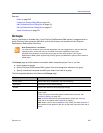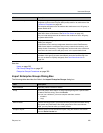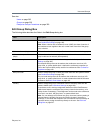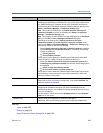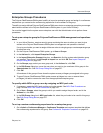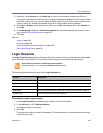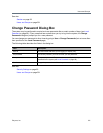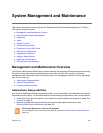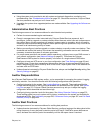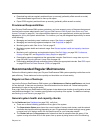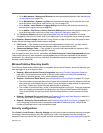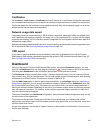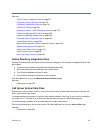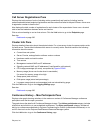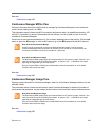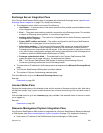
Polycom, Inc. 333
● Using the system tools provided to aid with system and network diagnostics, monitoring, and
troubleshooting. See Troubleshooting Utilities on page 372. Should the need arise, Polycom Global
Services personnel may ask you to run these tools.
● Upgrading the system when upgrades/patches are made available. See Upgrading the Software on
page 380.
Administrative Best Practices
The following are some of our recommendations for administrative best practices:
● Perform the recommended regular maintenance.
● Except in emergencies or when instructed to by Polycom Global Services personnel, don’t
reconfigure, install an upgrade, or restore a backup when there are active calls and conferences on
the system. Many of these operations will require a system restart to complete, which will result in
these calls and conferences being dropped. Before performing these operations, busy out all MCUs
and wait for all conferencing activity to cease.
● Before you reconfigure, install an upgrade, or restore a backup, manually create a new backup. Then
download and archive this backup in the event that something unforeseen occurs and it becomes
necessary to restore the system to a known good state.
● For proper name resolution and smooth network operations, configure two or more DNS servers in
your network configuration (see Network Settings on page 63). This allows the Polycom
RealPresence DMA system to function properly in the event of a single external DNS failure.
● Configure at least one NTP server in your time configuration (see Time Settings on page 69) and
preferably three. Proper time management helps ensure that your cluster operates efficiently and
helps in diagnosing any issues that may arise in the future. Proper system time is also essential for
accurate audit and CDR data.
● Unless otherwise instructed by Polycom Global Services, always use the High Security setting. See
Security Settings on page 50.
Auditor Responsibilities
As a Polycom RealPresence DMA system auditor, you’re responsible for managing the system’s logging
and history retention. You should be familiar with the following configurations and operations:
● Configuring logging for the system. See Logging Settings on page 80. These settings affect the
number and the contents of the log archives available for download from the system. See System
Log Files on page 370. Polycom Global Services personnel may ask you to adjust the logging
configuration and/or download and send them logs.
● Configuring history retention levels for the system. See History Retention Settings on page 276.
These settings affect how much system activity history is retained on the system and available for
download as CDRs. See Call History on page 395, Conference History on page 397, and Call Detail
Records (CDRs) on page 400.
Auditor Best Practices
The following are some of our recommendations for auditing best practices:
● Unless otherwise instructed by Polycom Global Services, configure logging at the debug level with a
rolling frequency of every day and a retention period of 60 days. If hard drive space becomes an
issue, decrease the retention period incrementally until the disk space issue is resolved.



